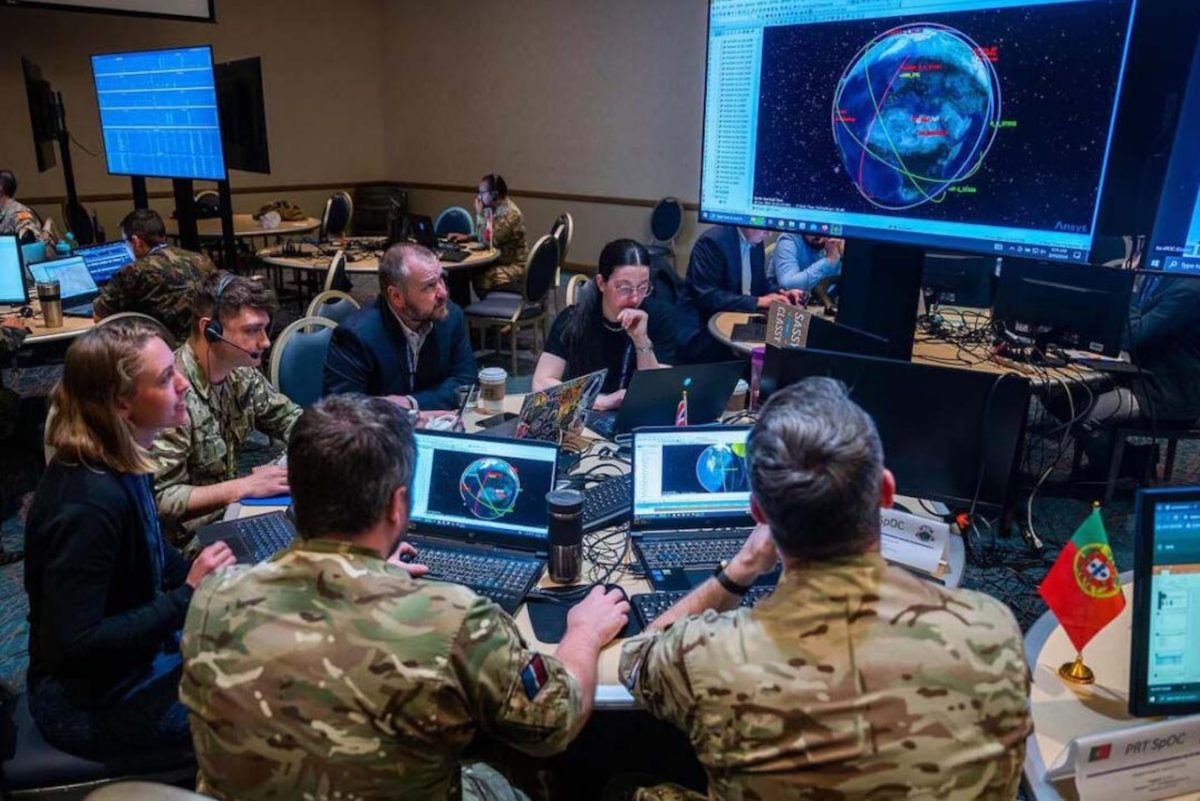The threat to America’s orbital infrastructure from both China and Russia is growing at an alarming pace.
According to Department of Defense spokesman Maj. Gen. Pat Ryder, Russia launched a weapon designed to attack U.S. satellite on May 16. It was placed in the same orbit as an American government spacecraft.
“Russia launched a satellite into low-earth orbit that we assess is likely a counter-space weapon presumably capable of attacking other satellites in low-earth orbit,” Pentagon spokesman Maj. Gen. Pat Ryder said today during a press conference.
Similar threatening weapons were launched by Moscow in 2029 and 2022,
In testimony before a Senate Armed Services subcommittee, John D. Hill, deputy assistant secretary of defense for space and missile defense, stated that “We are clearly in a time of rapid change in the space strategic environment.
He discussed the efforts by China and Russia to rapidly field space and counterspace capabilities aimed at the United States. “The scale and scope of the threats in space present significant risks to the American people, to our national interests, allies and partners.” Hill said.
Hill was joined by Frank Calvelli, assistant secretary of the Air Force for space acquisition and integration, and Gen. Michael A. Guetlein, the Space Force’s vice chief of space operations, in testifying before the subcommittee. They further underscored the need for urgent action to maintain U.S. leadership in space.
“Space has never been more critical to the security of our nation, and the success or failure of the joint force depends heavily upon the capabilities that we present,” Guetlein said. “Repeated actions by both the Russian Federation and the People’s Republic of China underscore the urgency for action.
“Although we still maintain control of space over our competitors, they are still working hard to close the gap and assert their dominance in space,” he added. “We cannot let this happen.”
DR. John F. Plumb Assistant Secretary of Defense for Space Policy recently testified before the House Armed Services Subcommittee on Strategic Forces. He warned “We are clearly in a time of rapid change in the space strategic environment, one which does not favor the slow or those resistant to change. As we evaluate our current security environment, both the People’s Republic of China (PRC) and Russia are focused on rapidly fielding space and counterspace capabilities to hold the Joint Force at risk and deny us the space-based services on which our Joint Force relies.
“China will probably have achieved ‘world-class’ status in all but a few space technology areas” by 2030. The PRC views the space domain, and the ability to deny space to PRC adversaries, as a critical component of modern warfare. The PRC has made significant investments in space capabilities to rapidly expand its ability to monitor forces across the globe and improve its long-range precision strike capabilities against U.S. or allied forces to deter or deny outside regional intervention. To advance its concept of “informatized” warfare, the PRC continues to develop and modernize space capabilities to conduct intelligence, surveillance, and reconnaissance (ISR) and to enhance communication, data relays, and positioning, navigation, and timing for its forces. The PRC also continues to rapidly develop counter-space capabilities to hold our on-orbit assets at risk. These capabilities include electronic warfare, direct-ascent anti-satellite missiles, directed-energy systems such as ground-based lasers, potential space-based kinetic weapons, and orbiting space robots. To support its increased investment in space, the PRC is modernizing its launch capabilities and capacity to reconstitute its space capabilities if needed.
“Russia is seeking to mitigate U.S. space capabilities by developing a range of offensive counterspace capabilities, including electronic warfare, directed energy weapons, direct-ascent anti-satellite systems, and orbital systems with counterspace applications. Russia’s investments in counterspace systems are designed to exploit what it views as a U.S. overreliance on space for conducting military operations and to offset perceived U.S. military advantages… Russia will be more reliant on counterspace capabilities as it rebuilds its ground force from extensive losses in its war against Ukraine. Russian military doctrine embraces multi-domain attacks, using both reversible and irreversible capabilities, to target adversary satellites. Russia has conducted cyber intrusions against commercial satellite communication networks, and Russia has demonstrated through both public statements and actions that it views commercial satellites providing space-based services to Russia’s adversaries as potential targets. Russia is also developing a concerning anti-satellite capability related to a new satellite carrying a nuclear device that Russia is developing. This capability could pose a threat to all satellites operated by countries and companies around the globe, as well as to the vital communications, scientific, meteorological, agricultural, commercial, and national security services we all depend upon.”
Photo: U.S. and partner nations work together to solve challenging space scenarios during Global Sentinel 2024, an annual exercise focused on combined space operations, at Vandenberg Space Force Base (DoD photo)
